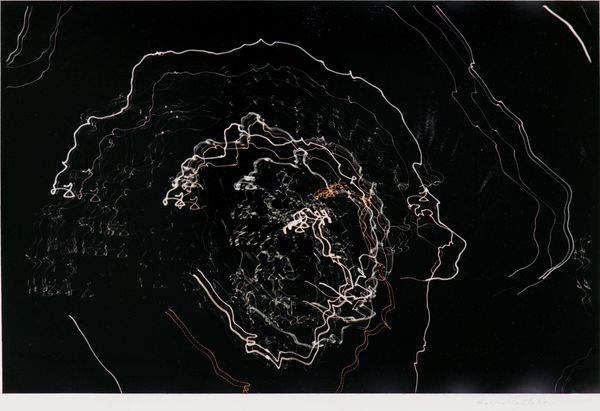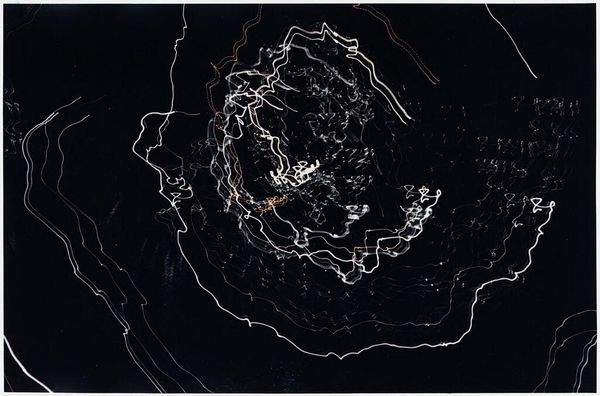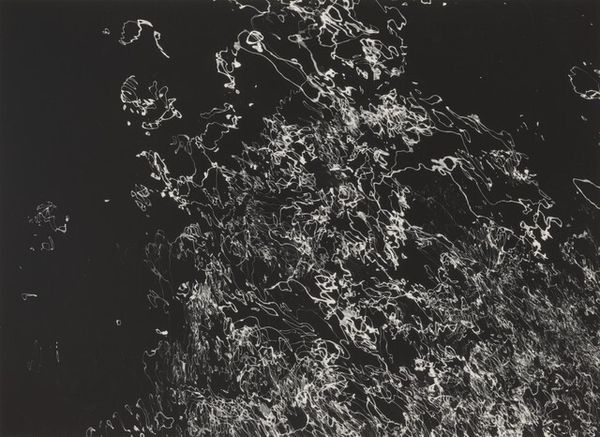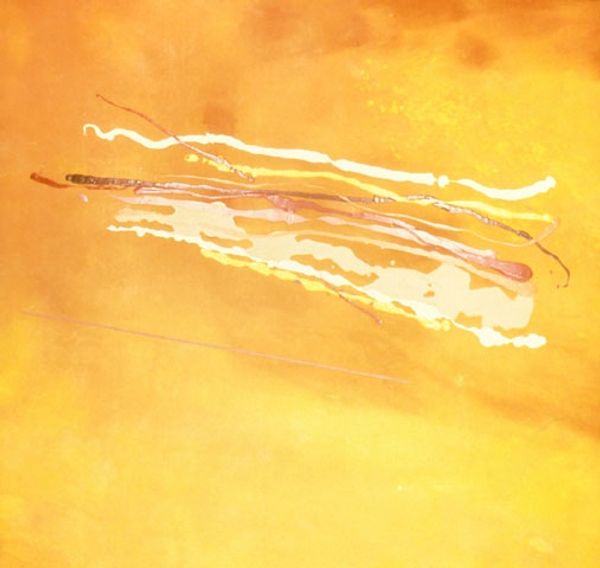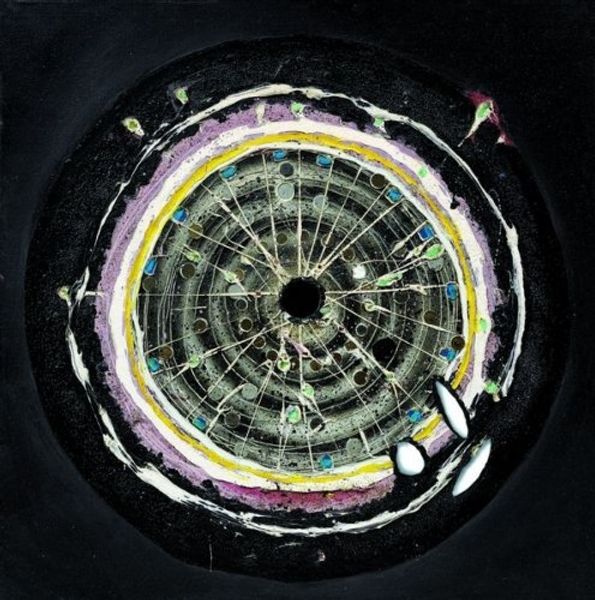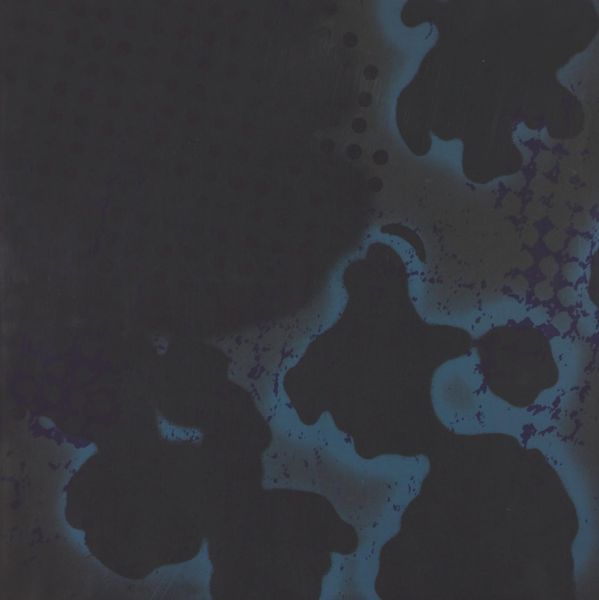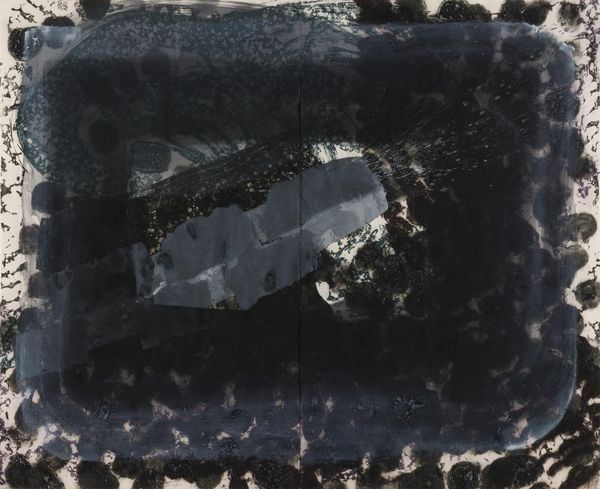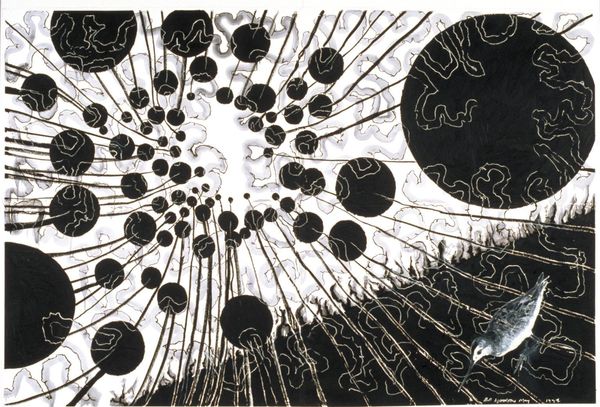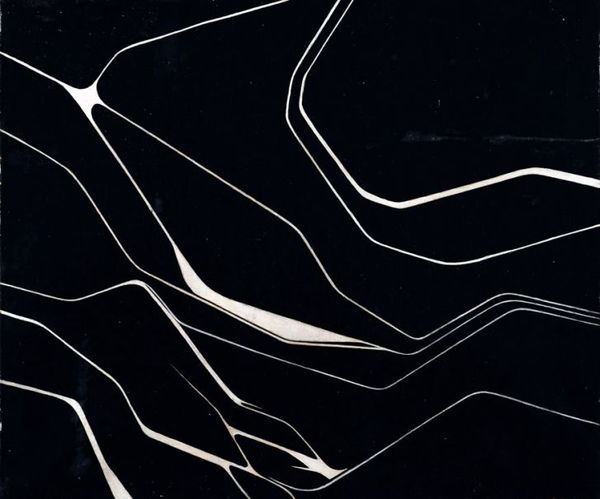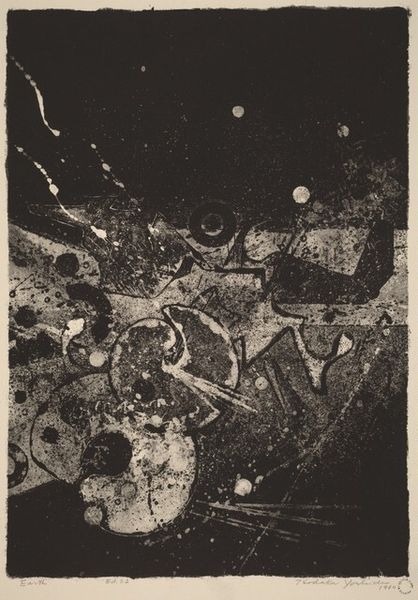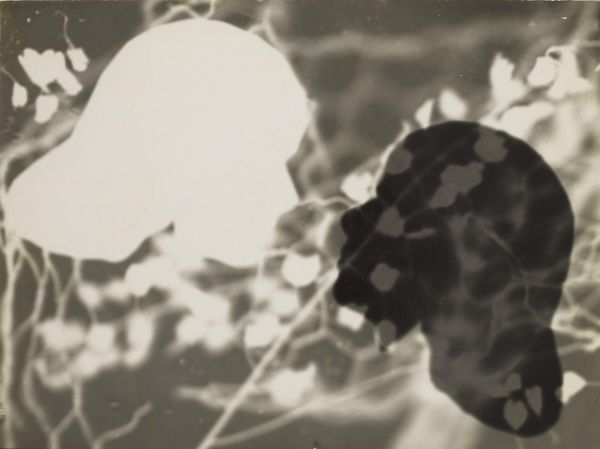
photography
#
abstract-expressionism
#
kinetic-art
#
abstract expressionism
#
generative art
#
photography
#
abstract form
#
geometric-abstraction
#
abstract-art
#
line
#
cityscape
#
abstract art
Dimensions: image: 22.2 × 34 cm (8 3/4 × 13 3/8 in.) sheet: 26.3 × 35.4 cm (10 3/8 × 13 15/16 in.)
Copyright: National Gallery of Art: CC0 1.0
Editor: This photograph, "Camera Movement on Neon Lights at Night," possibly created between 1946 and 1979 by Harry Callahan, is simply mesmerizing. The light trails seem to dance across the dark background. How do you interpret this work from a formalist perspective? Curator: It's an intriguing study in pure form. Callahan reduces the cityscape to its most basic elements: light and line. The composition revolves around the interplay of these lines, some sharp and angular, others fluid and organic. Note the careful balance of positive and negative space, how the darkness serves not as a void, but as a counterpoint that accentuates the brilliance of the neon. Editor: It almost feels like he’s rejecting any clear representational narrative in favor of pure visual experience. Is there any precedent? Curator: Precisely. We could see this as an exercise in photographic abstraction, a parallel to the abstract expressionist movement in painting. It is an image defined by its inherent qualities of shape, form and texture over any narrative reading. Editor: It seems quite radical for its time, even for the late seventies. Did Callahan use some specific darkroom manipulation techniques, or is this all about in-camera motion? Curator: That’s a crucial point to consider. How did Callahan achieve this effect? The “how” is essential to understanding the artwork’s form. It’s primarily achieved through the artist’s technique - long exposure coupled with camera movement, creating the blur. Focus on how it constructs a new visual language through process. Editor: I never really considered the technique being as important, that completely changes how I see the image now. Thank you. Curator: Remember, in formalism, understanding the “how” illuminates the “what”. It helps decode its essence, stripped bare of external references. I also learned a lot from analyzing Callahan’s formal techniques and composition here.
Comments
No comments
Be the first to comment and join the conversation on the ultimate creative platform.
